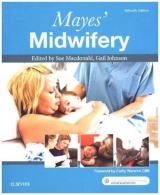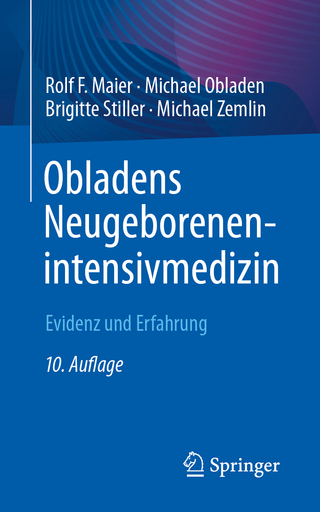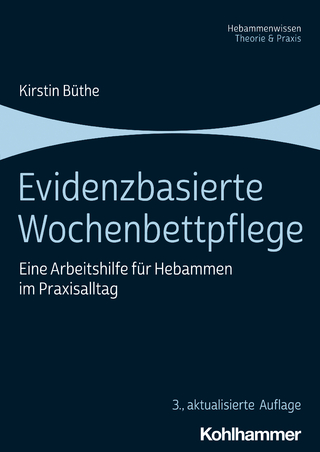
Mayes' Midwifery: A Textbook for Midwives
Bailliere Tindall (Verlag)
978-0-7020-5233-0 (ISBN)
- Titel erscheint in neuer Auflage
- Artikel merken
Mayes' Midwifery, an established key textbook for students and qualified midwives, contains essential knowledge for professional practice. For this 14th edition, each section and chapter has been fully updated and enhanced by leading authors to ensure the text complies with contemporary practice and current guidelines. Added benefits are the availability of a variety of additional online resources for each chapter, including case studies, video and website links, and a bank of multiple-choice questions to test knowledge.
With a strong emphasis on normal birth, the book covers the spectrum of midwifery-related topics applied to practice, providing a foundation of knowledge, and encouraging independent thought through the use of reflective exercises in each chapter and online. The book provides midwives with material that meets individual ways of learning and supports current modes of midwifery education.
Mayes' Midwifery is the text for initial preparation and for ongoing midwifery practice.
New chapters on essential contemporary issues:
Vulnerable women
Perspectives on the future of midwifery, in a global context
Evidence-based information to guide best practice
Learning outcomes and Key Points in all chapters
Reflective activities
Now with an integrated website offering additional resources and material including:
Multiple-choice questions for self-testing
Case studies
Reflective activities to consolidate your professional development
Useful additional reading, resources and weblinks
Expanded topics
Downloadable materials including illustrations
Sue has been a midwife for over 30 years, and believes passionately in the contribution that midwives can make to the lives of women, babies and families. This has driven her career path and practice in clinical midwifery, education and research. Sue is is currently undertaking an MPhil/PhD at Middlesex University looking at compassionate care from womens and midwives perspectives. Sue is a midwife and educationalist by background. After qualifying as a nurse at Guy's Hospital, she trained as a midwife and, following a year working in Australia, returned to practice as a midwife in London and in Dorset, working in all areas of maternity services. Sue completed the Advanced Diploma in Midwifery and then moved into midwifery education, completing a Post Graduate Certificate in the Education of Adults. Sue designed the first 'direct entry' midwifery programme in London, based on her own original 'patchwork' design. She was Principal Lecturer and Lead Midwife for Education (LME) at the Middlesex University, London, and developed a range of innovative continuing education courses for midwives from initial degree to Masters level. Sue worked at the Royal College of Midwives for ten years as the research and education manager and LME, and in this role supported key national education initiatives including the RCM examination of the newborn learning module; RCM return to midwifery practice programme, the RCM education strategy 'Valuing Practice' and overseas pre-registration curricula. She managed the PEARLS research project sponsored by the Health Foundation. Her RCM role included acting as a media spokesperson on midwifery and neonatal issues. More recently, Sue has been working as an independent midwife consultant, and has been involved in a major UNICEF programme overseas, has developed and curated a number of major national conferences, and has designed electronic learning materials. She has edited the previous 13th and 14th editions of Mayes Midwifery. She received an Honorary Fellowship from the RCM in June 2014.
Part 1 The Midwife in Context
1 The global midwife
2 A history of the midwifery profession in the United Kingdom
3 Statutory framework for practice
4 The midwife as a lifelong learner
5 Evidence-based practice and research for practice
6 Leadership and management in midwifery
7 Governance in Midwifery
8 Ethics and midwifery practice
9 Law and the midwife
10 Pharmacology and the midwife
Part 2 Childbirth in Context
11 Social, cultural and spiritual context of childbearing
12 Psychological context
13 Sexuality
14 The Health Service Context and Midwifery
15 Frameworks for the care of the child (Children Act) and Social Services
Part 3 Public Health, Health promotion and Childbirth
16 Epidemiology
17 Nutrition
18 Complementary therapies in maternity care: responsibilities of midwives
19 Health promotion and education
20 Preconception care
21 Education for parenthood
22 Physical preparation for childbirth and beyond, and the role of physiotherapy
23 Vulnerable women
Part 4 The anatomy and physiology of fertility, conception and pregnancy
24 Anatomy of male and female reproduction
25 Female reproductive physiology
26 Genetics
27 Fertility and its control
28 Infertility and assisted conception
29 Fertilization, embryonic, fetal and placental development
30 The fetal skull
Part 5 Pregnancy
31 Maternal and fetal responses to pregnancy
32 Confirming pregnancy and care of the pregnant woman
33 Antenatal investigations
34 The choice agenda and place of birth and care
Part 6 Labour and Birth
35 Physiological changes in labour
36 Care in the first stage of labour
37 Care in the second stage of labour
38 Pain, Labour and women's choice of pain relief
39 Care in the third stage of labour
40 The pelvic floor
Part 7 The Newborn Baby
41 Physiology, assessment and care
Part A Newborn physiology
Part B Assessment and care of the newborn
42 Thermoregulation
43 Infant feeding
44 The pre-term baby and the small baby
45 Respiratory and cardiac disorders
46 Neonatal jaundice
47 Infection
48 Congenital anomalies, fetal and neonatal surgery, and pain
49 Metabolic and endocrine disorders
50 Sudden infant death syndrome
Part 8 The Postnatal and Neonatal Period
51 Content and organization of postnatal care
52 Morbidity following childbirth
Part 9 Problems and Disorders of Pregnancy, Childbearing and Birth and their Management
53 Nausea and vomiting
54 Bleeding in pregnancy
55 Medical disorders of pregnancy
56 Hypertensive disorders of pregnancy
57 Sexually transmitted infections
58 Abnormalities of the genital tract
59 Multiple pregnancy
60 Pre-term labour
61 Procedures in obstetrics
62 Induction of labour and post-term pregnancy
63 Rhythmic variations of labour
64 Malpositions and malpresentations
65 Disproportion, obstructed labour and uterine rupture
66 Shoulder dystocia
67 Presentation and prolapse of the umbilical cord
68 Complications of the third stage of labour
69 Maternal mental health and psychological problems
70 Grief and bereavement
Part 10 the Future
71 Midwives for the 21st century
| Zusatzinfo | Approx. 383 illustrations |
|---|---|
| Verlagsort | London |
| Sprache | englisch |
| Maße | 189 x 246 mm |
| Themenwelt | Medizin / Pharmazie ► Gesundheitsfachberufe ► Hebamme / Entbindungspfleger |
| Medizin / Pharmazie ► Medizinische Fachgebiete ► Gynäkologie / Geburtshilfe | |
| ISBN-10 | 0-7020-5233-7 / 0702052337 |
| ISBN-13 | 978-0-7020-5233-0 / 9780702052330 |
| Zustand | Neuware |
| Haben Sie eine Frage zum Produkt? |
aus dem Bereich



